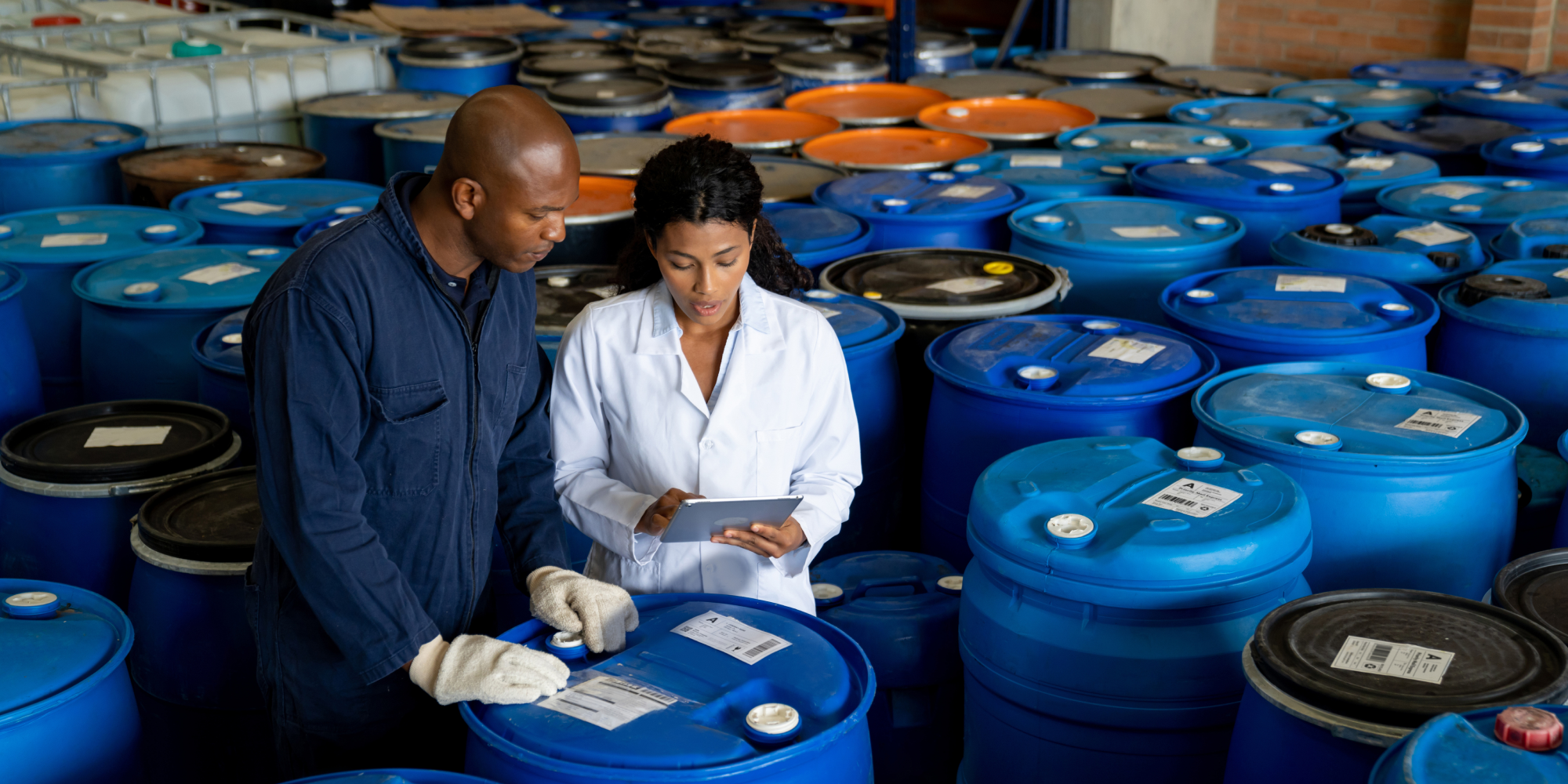Storage and Shelf Life: Sodium Hydroxide

As the most practical and widely used of the strong acids, sodium hydroxide is a staple in almost every chemistry lab. In this article, we’ll go over Storage and Shelf Life: Sodium Hydroxide.
It is essential to follow best lab practices when storing and working with sodium hydroxide for five reasons:
- Mitigating safety concerns for workers and others frequenting the area.
- Lowering environmental impact of chemical use.
- Prolonging shelf life of stored reagents.
- Complying with OSHA regulations for proper chemical storage.
- Minimizing unnecessary lab expenditure for hazardous waste removal and restocking expired reagents.
What is sodium hydroxide?
Other common names for sodium hydroxide include lye and caustic soda. This basic substance, which has the chemical formula NaOH, is reactive with strong acids and even water. You’ll find it in the lab as a white and odorless solid powder. It can otherwise be dissolved in water, forming an alkaline liquid solution. It is available for purchase in either form, though the solid form is more practical for shipping purposes.
In laboratory and industrial environments, sodium hydroxide is one of the most common alkalizing agents. In the home setting, sodium hydroxide is used in soaps and drain cleaners. This is thanks to the ability of sodium hydroxide to modify lipids. General applications of sodium hydroxide also include:
- Fuel cells
- Food processing (e.g. vegetable skin removal)
- Drain cleaner
- Soaps/detergents
- Paper production
- Textile processing
- Pickling
- Pharmaceuticals (e.g. anticoagulants, cholesterol medications)
- Water treatment
What are the safety hazards associated with sodium hydroxide?
When considering storage of sodium hydroxide or any chemical, a good starting point is to consider the major safety hazards that come into play. For example, sodium hydroxide is highly corrosive. It will induce immediate damage on skin contact, inhalation, or ingestion. Acute exposure to concentrated sodium hydroxide may result in severe burns, permanent organ damage, and even death. Chronic exposure can result in dermatitis (skin inflammation) and lung damage.
If sodium hydroxide is in your chemical inventory, you should have an eyewash and an emergency shower in the vicinity, as well as access to appropriate personal protective equipment for all employees, and a fume hood for proper ventilation.
How long does sodium hydroxide last?
Another important implication of proper sodium hydroxide storage is the shelf life. Optimal storage will result in the longest shelf life, reduced waste, and reduced hazard risk.
The shelf life of sodium hydroxide is often cited by the manufacturer as 3 years. This is assuming that the lab has complied with proper storage conditions. It also accounts for the stability or shelf life of the storage vessel itself.
How to properly store sodium hydroxide
Sodium hydroxide should be kept in the original bottle in which it was purchased, which should be kept tightly sealed to minimize moisture and oxygen exposure. The manufacturer optimizes the container for each chemical and specifies storage conditions. For instance, a metal container is an unsafe option of sodium hydroxide because it will readily react to form flammable and explosive hydrogen gas.
Since sodium hydroxide is also a corrosive chemical, it will eat away at iron, copper, and many types of plastic. The manufacturer takes all of these considerations into account when selecting the storage vessel and specifications.
All labs should have a lab manager keeping careful inventory of all chemical reagents on the premises, including their purchase date, opening date, storage location, and expiration date. The lab manager should ensure that all chemicals are stored at the recommended temperature with appropriate ventilation. For example, sodium hydroxide must be stored in a dry environment with proper ventilation, and away from any heat or ignition sources.
Finally, store sodium hydroxide away from incompatible chemicals, including:
- Oxidizers
- Chlorinated solvents
- Ammonia
- Organic materials
- Strong acids
If you do find your lab in possession of expired or surplus sodium hydroxide, sodium hydroxide must be treated as hazardous waste. This goes for both liquid and solid forms of sodium hydroxide. You should schedule a lab pick-up with your local hazardous waste disposal company. Do not pour sodium hydroxide down the drain in laboratory or industrial settings.
Where to buy sodium hydroxide
Lab Alley is proud to be your partner in all things chemical supply, including sodium hydroxide. All of our chemicals are sustainably and ethically sourced, high quality, competitively priced, and easy to order.

